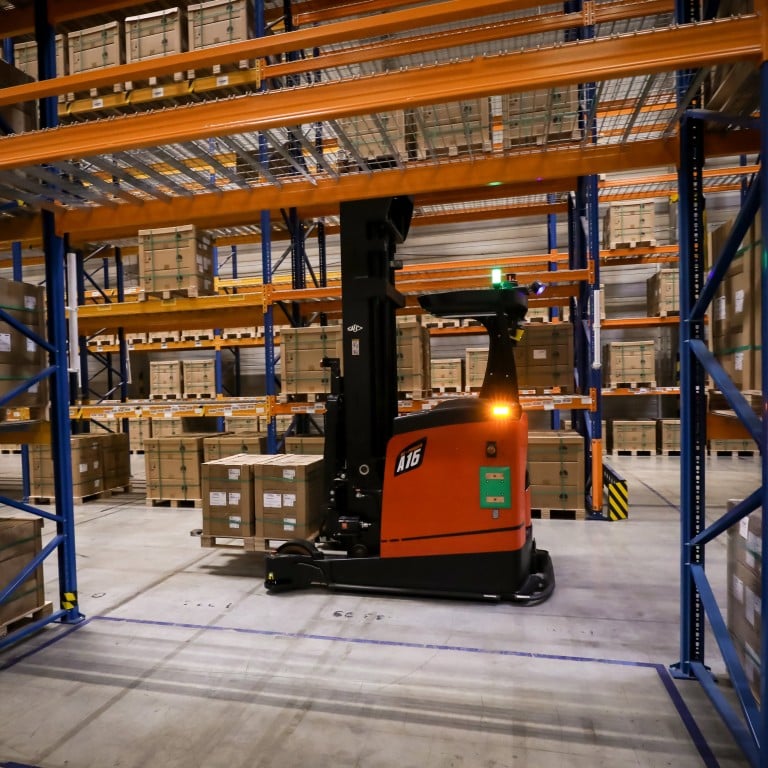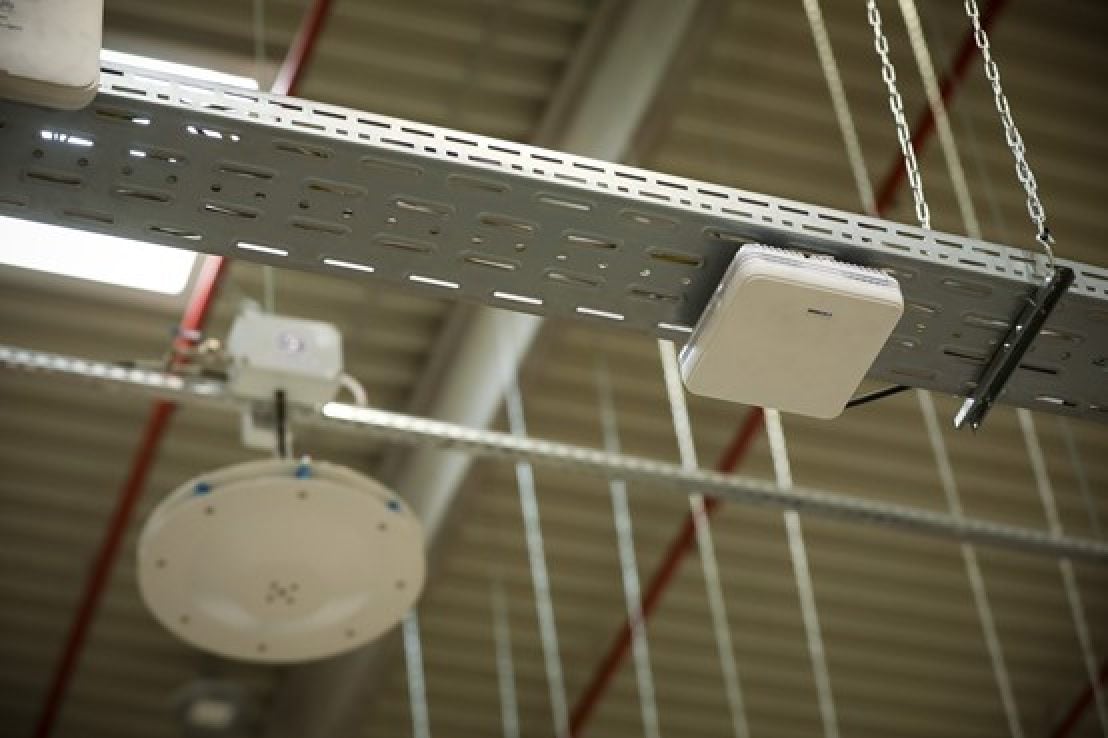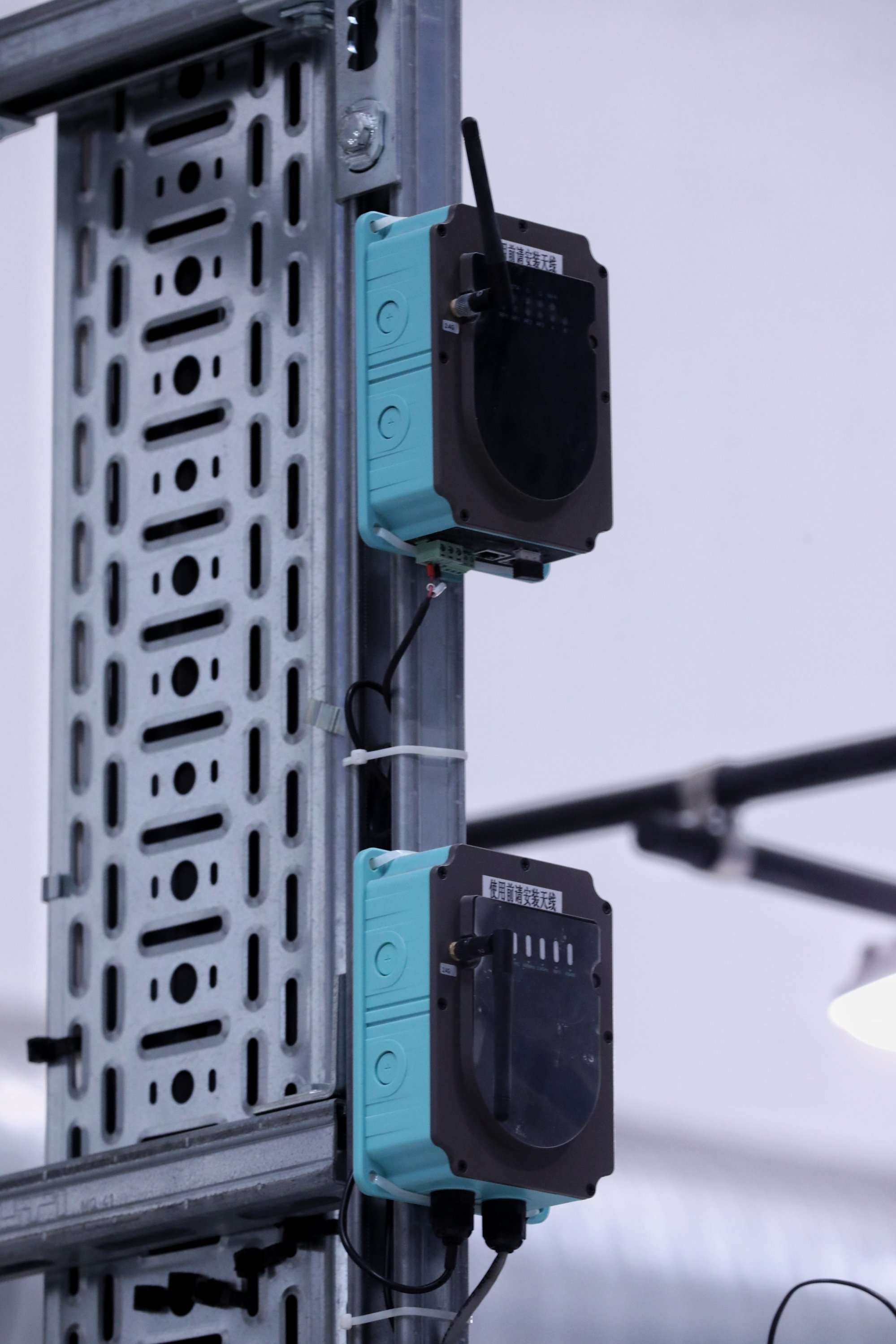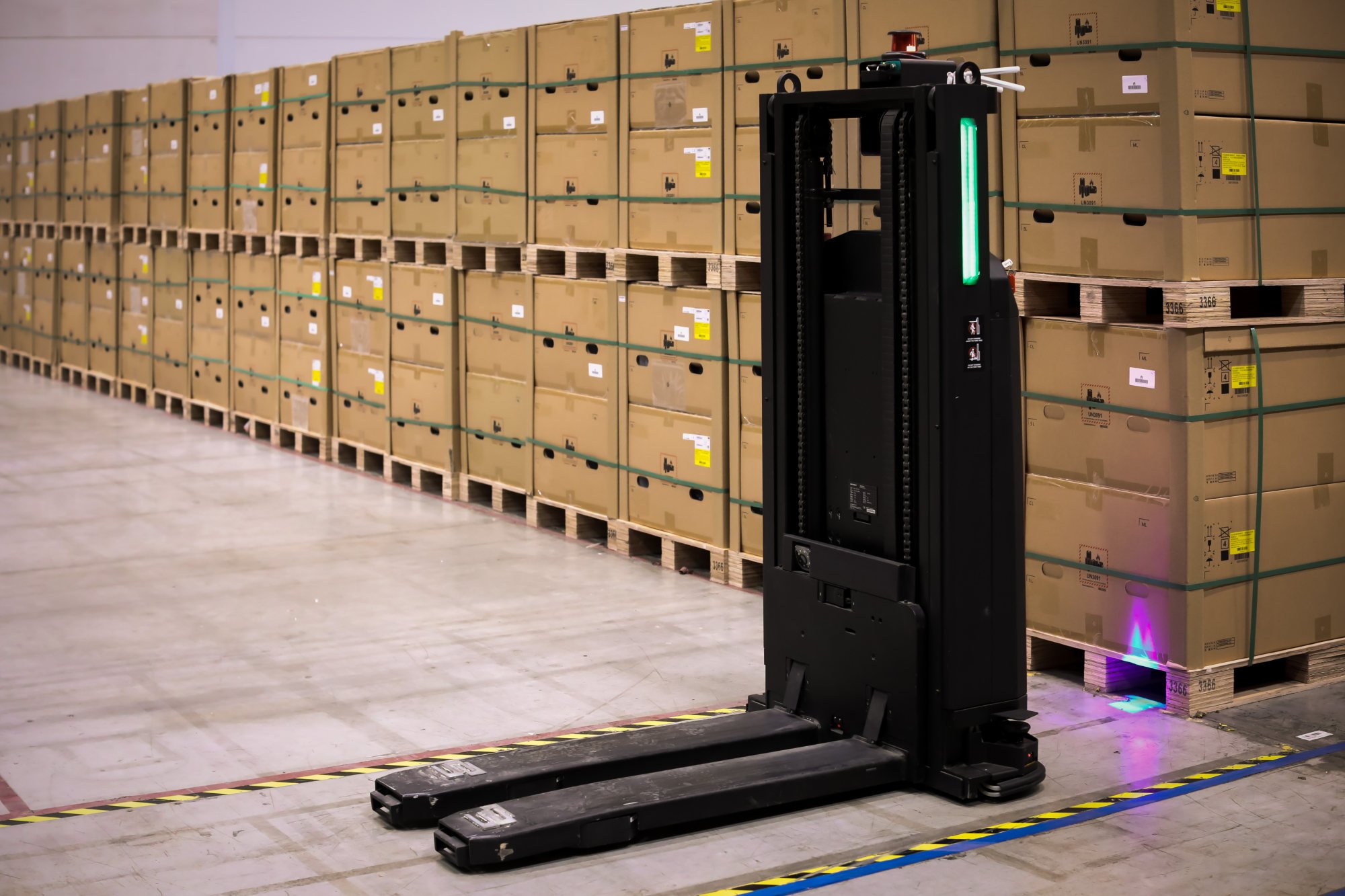
How smart warehouse automation has improved efficiency and safety in Netherlands and Hungary
- Huawei Technologies’ European Supply Centres feature 5G, AI and cloud-computing innovations that support enterprise management system offering real-time capacity data
- Self-driving forklifts and guided pallet trucks ensure safe, round-the-clock operations and reduce risk of injuries to staff
The value of an efficient system of producing and supplying goods can never be overstated.
In today’s globalised world, as businesses embrace the fourth industrial revolution, or Industry 4.0 – the next phase in the digitalisation of the manufacturing sector, driven by the rise of data, interconnectivity, analytics and automation – raw materials and components are often travelling across continents and oceans before a finished product reaches customers.
So it makes sense for businesses to have an efficient supply chain and inventory management, so they can quickly process orders, and rapidly transport and deliver goods.
Smart factories and warehouses, with digitalised manufacturing features that use interconnected devices, machinery and production systems to continuously collect and share data, are rapidly emerging as the mainstay of the future of supply-chain management.
These facilities use high-speed 5G mobile technology and artificial intelligence (AI) – computer systems that can copy human behaviour – which offer many business solutions, including self-driving vehicles, proactive quality control measures, and remote maintenance using augmented reality, where the real-world environment is enhanced with computer-generated visual elements, sounds and other stimuli.
“Digitalisation and automation are two industry megatrends and a key to our future,” Vicky Zhang, vice-president of corporate communications at the Chinese telecommunications company, Huawei Technologies, said at its smart 5G European Supply Centre (ESC) in Waalwijk, in the Netherlands, during last December’s demonstration of how digital tools can boost the competitiveness of global businesses and shape sustainable development.
The facility is equipped with Industry 4.0 capabilities, including 5G, AI, and cloud-computing innovations, which are “leading us to a more intelligent and low-carbon world,” Zhang said. To design these factories of the future, Huawei has been working in collaboration with the United Nations Industrial Development Organisation (UNIDO), the UN agency helping countries carry out economic and industrial development.
The two organisations have been partners before – teaming up last July to launch the Global Alliance on Artificial Intelligence for Industry and Manufacturing (AIM Global) – an initiative created to foster the use of AI use and innovation, with a key focus on sustainability.

Huawei’s ESCs in the Netherlands and in Paty, near Budapest, Hungary, both use 5G technology to enable a number of digitalised systems, from enterprise management to autonomous vehicles.
The company began to implement this technology in 2019 and has made significant strides since then. “We have [implemented] self-driving forklift trucks and [achieved] full automation of the entire logistics system,” Sandor Papp, deputy head of the ESC, said. Such solutions have helped to improve the logistics efficiency of the entire site by 20 per cent, he said.
At Huawei’s regional distribution centres, environmental controls – including temperature, humidity and cleanliness – are all automated, with data provided by 5G-connected monitors. Previously, these controls had to be adjusted by technicians manually, twice every shift.
Yet now, through the use of 5G technology, a variety of sensors can constantly measure these factors and take action when necessary. The system can automatically switch on filters, control the climate unit, and manage the humidity levels, which means technicians can make better use of their time and focus on tasks involving the logistical process and system development.
The benefits of digitalisation are apparent at Huawei’s distribution centres. With rapid data collection capabilities, the company is able to plan ahead and substitute a problem-solving mindset with one of problem avoidance.

As part of its enterprise management system, Huawei can analyse demand on a daily, weekly, or even monthly basis, and plan capacity accordingly. This is made possible by real-time data coming in from production lines and order processing teams. On average, the system refreshes itself every three seconds.
Automated guided vehicles (AGVs), including pallet trucks and forklifts, work on the floor of the factory, transporting and sorting out goods around the clock. They not only improve efficiency, but also greatly reduce the possibility of staff injuries when heavy objects are being transported.
The effective use of AGVs is made possible by the 5G capabilities at Huawei’s distribution centres, which ensure stable network connectivity across several square km.
If AGVs were to use Wi-fi or 4G technology, they would have limited coverage of only a few square metres, which would mean them having to continually switch connections as they moved around different areas of the factory, and face other problems such as a signal dropout or loss of the connection.
Huawei’s 5G networks also offer better penetration through metal surfaces, which can prove a problem when using Wi-fi connectivity in factories.
The ESC combines these innovations to deliver goods totalling more than half a million cubic metres per year. “Using the latest technologies, we can manage faster inbound and outbound processes, and provide much more accurate confirmations for our deliveries,” Papp said.

Huawei is also introducing similar digital solutions at its warehouses and distribution centres in Indonesia, the United Arab Emirates and Brazil.
Smart factories using automation seem to be the way forward as digitalisation becomes more widespread around the world.
“In Europe – and I think it’s the same in China – there is a huge demographic change,” Patrick Glauner, professor of AI at Germany’s Deggendorf Institute of Technology, said. “There is a lack of talent and we have an ageing society.”
It means there is a growing need to automate processes and complete existing tasks with less manpower, he said. “AI allows us to compensate for and address these problems.”
The stage seems set for fully-automated factories and seamless supply chains as Huawei Technologies and UNIDO lead the way towards making Industry 4.0 a reality.

